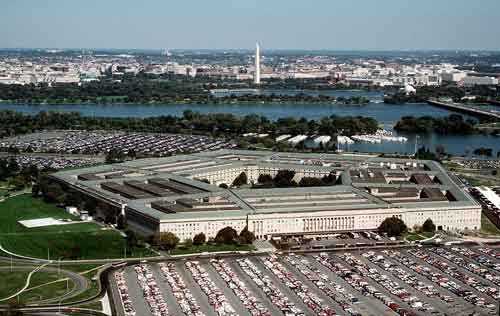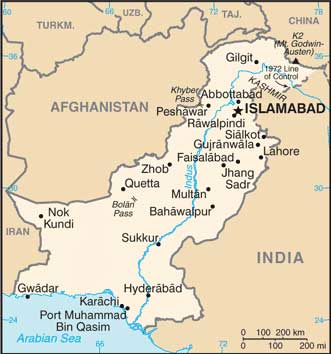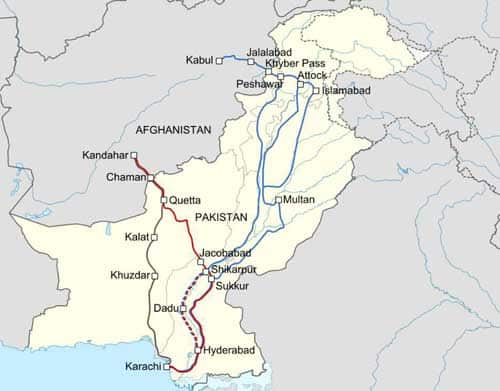WASHINGTON, Dec. 22, 2011 – U.S. forces acted in self-defense and responded with appropriate force after being fired upon during a Nov. 25-26 incident on Afghanistan’s border with Pakistan, according to findings from a Defense Department investigation that was released today.
Twenty-four Pakistani soldiers were killed in the incident. Air Force Brig. Gen. Stephen Clark, the investigating officer, also found no intentional effort to target people or places known to be part of the Pakistani military, or to deliberately provide inaccurate location information to Pakistani officials.
U.S. Central Command commander Marine Corps Gen. James N. Mattis appointed Clark, the director of plans, programs, requirements and assessments for Air Force Special Operations Command, to conduct the investigation. Clark briefed the Pentagon press on telephone from Hurlburt Field, Fla.
Clark said the incident was a result of inadequate coordination between U.S. and Pakistani military officers operating through the border coordination center. This includes relying on incorrect mapping information shared with the Pakistani liaison officer, which resulted in a misunderstanding about the true location of Pakistani military units, DOD officials said. There were other gaps in information about the locations and activities of units on both sides of the border.
Pentagon Press Secretary George Little again expressed the U.S. military’s “deepest regret” over the loss of life. “We further express sincere condolences to the Pakistani people, to the Pakistani government and most importantly to the families of the Pakistani soldiers who were killed or wounded,” he said.
U.S. and NATO officials now want to focus on learning from the mistakes the investigation highlighted and correcting them.
But the problem is deeper than one incident, according to the report. “We must work to improve the level of trust between our two countries,” the report says. “We cannot operate effectively on the border — or in other parts of our relationship — without addressing the fundamental trust still lacking between us. We earnestly hope the Pakistani military will join us in bridging that gap.”
The results of the investigation have been briefed through the chain of command and also have been shared with Afghan and Pakistani officials, DOD officials said.
Clark gave a narrative on the operation. The operation was to put 120 personnel into Nawa village near the border with Pakistan. Because of the nearness to the border, the operation went up to the International Joint Command in Kabul for approval. Army Lt. Gen. Curtis Scaparrotti, the IJC commander, made some changes to the plan to avoid complications. The helicopter landing zone, for example, was moved farther away from the border.
“He also asked any known [Pakistani] border posts be identified,” Clark said.
Two border posts were identified, but not the ones where the actions subsequently occurred. “That is a critical point in part of this in that the two locations that were in question here were not identified on any chart to include the official chart in the Nawa Coordination Center,” Clark said.
The night of the operation, U.S. forces moved along goat trails through steep and climbing terrain toward Nawa village. “At about 11:09 p.m., they receive … direct and heavy machine-gun fire,” Clark said.
Overhead were two F-15 Strike Eagles, an AC-130 gunship, an MC-12 intelligence, surveillance and reconnaissance aircraft and two AH-64 Apache helicopters. They identified that the fire and subsequent mortar fire was coming from the ridgeline. The tactical commander called for the AC-130 and an F-15 to fly low over the valley dropping flares. The low-level passes over the valley and the flares “is key for the ground tactical leaders’ mindset, in that there should be no doubt in anybody’s mind that it’s now coalition forces in the area, which is the intent of the show of force,” Clark said.
Machine-gun and mortar fire continued, and the tactical commander received word that there were no Pakistani military posts in the area. “This is actually the first point where we have found a series of miscommunications to have occurred for the tactical event,” he said.
Regional Command East, the battlespace owner, said they were checking with the border coordination center, “but we are tracking no Pak mil in the area,” Clark said.
“That was heard at the lower headquarters as ‘no Pak mil in the area’ and radioed to the ground force commander and entered into an electronic chat room, which then began circular reporting back to the regional command, which then assumed the lower echelon had validated and confirmed there were no Pak mil in the area,” Clark said.
The general said this was the first point of communication failure that if had been detected and corrected might have prevented the incident.
The commander calls for support from the AC-130 onto the positions that were firing on the American troops. That engagement lasts about six minutes. A few minutes later there is a second engagement with the AC-130 and the Apaches firing on hasty battle positions — rudimentary bunkers — that are firing on the American forces. That action ends at midnight.
During this engagement, Pakistani liaison officers are calling Regional Command East to say that their forces are under fire.
“There is confusion caused by this because there is a lack of precision on where this is occurring,” Clark said. “When asked, the general answer back is, ‘Well, you know where it is because you are shooting at them,’ rather than giving a position.”
The border coordination center has the exact latitude and longitude of the fight. It is put on a computer but the map overlay was configured incorrectly. The computer shows the fight as occurring 14 kilometers away from the actual battle. “That’s our second point of failure in clarification of where things were going and what has happening,” the general said.
There was a third engagement beginning at about 12:40 a.m. and lasting through 1 a.m. This was a bit north of the previous engagements and centered on a heavy machine gun.
“About that time there was confirmation and clarification across the net that in fact there were Pakistani military in the area and that there were border posts,” Clark said. “That word was then relayed down to the ground tactical leader, who immediately ceased engagement, and no rounds were fired after that time.”
Source: Department of Defense





